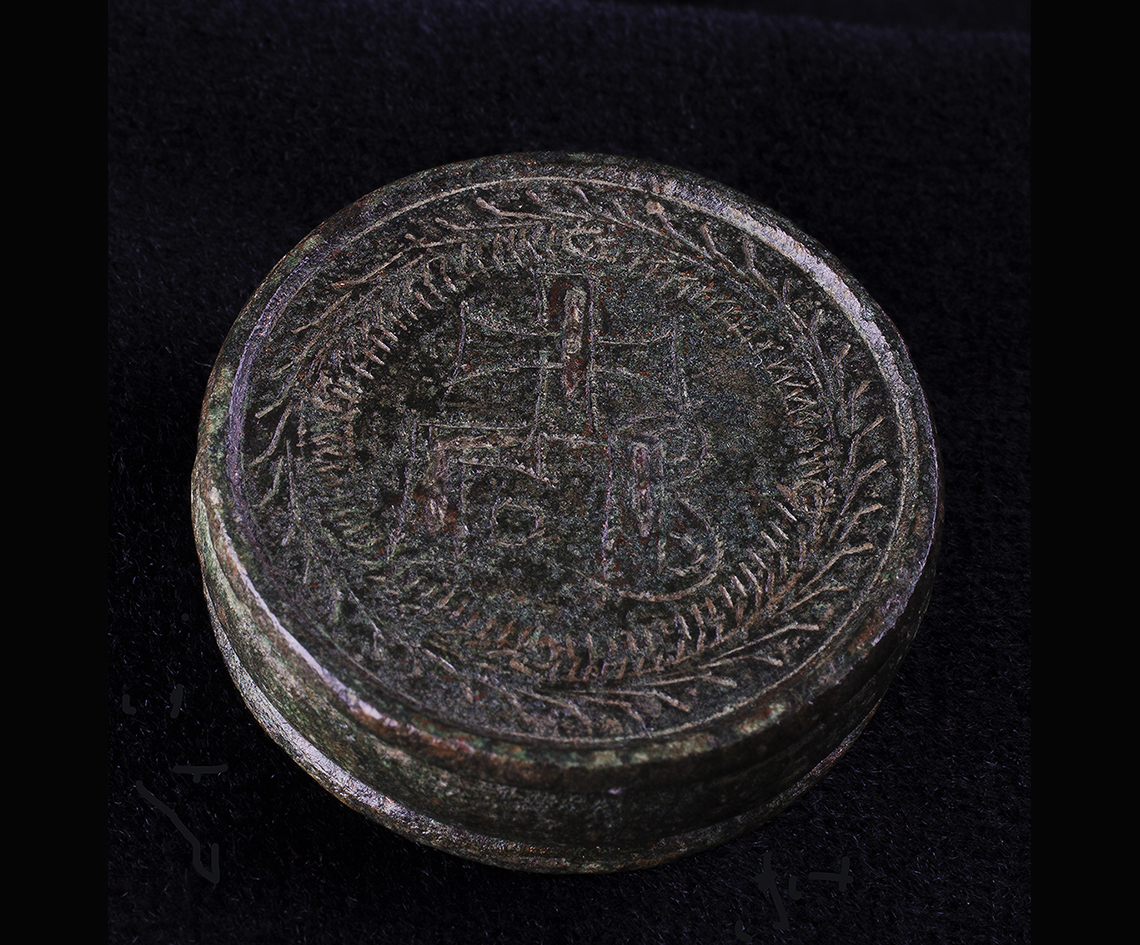
Bronze
7th c. AD
Puig Rom - Puig de les Muralles (Roses - Alt Empordà)
A Byzantine bronze weight or exagium found in 1946 in the Visigothic hillfort of Puig Rom or Puig de les Muralles (Roses). It is dated to the 7th century AD.
These weights were used to verify that the weight of precious metals, especially gold, conformed to the official measurements. In the case of coins, we could talk about monetary weights.
This is a cylindrical bronze weight 35.5 mm in diameter, 5 mm thick and weighing 53.5 g. On the obverse it bears a Greek cross and below the value mark the Greek letters Γ· Β, all surrounded by a laurel or crown. The cross, the value mark and the laurel are finely incised. Originally, the incisions were covered with a layer of silver that made them stand out against the colour of the bronze. The edge is covered by two smooth cords. It appears to originate from Alexandria (Egypt).
It is a measure that is part of the so-called uncial system, which took the ounce (indicated by Γ·) as a unit. An ounce was a twelfth of a pound and equalled 27.28 g. The letter Β is the numeral 2. We therefore have 2 ounces, one sextans. The difference in the weight of our exagium and the theoretical weight of the sextans (54.56 g) is minimal and can be explained by wear and loss of material such as the silver coating.
The presence of an official Byzantine measure in a small Visigothic hillfort, almost at the farthest point in the Mediterranean from Byzantium or Alexandria, tells us of the economic, political and cultural power of the Byzantine Empire at that time.
